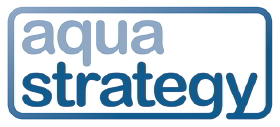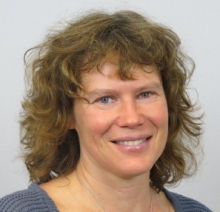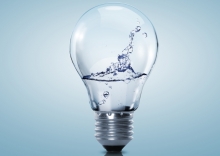Issue:
High-tech solutions present some of the best opportunities for businesses looking to the Chinese market. Keith Hayward spoke with Rodney Clemente, VP Global Desalination Operations with Energy Recovery Inc., about the approach that has brought the company success there for its desalination energy efficiency technologies and on-going prospects in the sector.

Californian company Energy Recovery Inc. has long been a player in the Chinese desalination sector, in fact ‘since the beginning of time’, as Rodney Clemente, the company’s VP Global Desalination Operations, puts it. By this he means almost as long as the company has existed. ‘They were one of our first commercial regions,’ he says.
ERI’s technologies feature in particular its PX pressure exchangers. These ceramic devices with just one moving part save on energy use in seawater reverse osmosis desalination by recovering hydraulic energy from the high pressure reject stream and transferring it to the low pressure feed water. The company saw in the mid-90s that China would be an emerging market and decided to get in early. ‘We knew being able to be one of the first technology suppliers for SWRO would be key,’ says Clemente.
The move proved to be a success, especially prior to the global financial crisis of 2008. Clemente recalls that the country was preparing then for the Beijing Olympics and an influx of tourism. Most plants built during this time were in the small to medium size range of between 7000 and 25,000 m3/day, and more than half of those were co-located with power plants, he says. Clemente describes this period, at least for ERI, as ‘the golden era of desal’. ‘Between 2004 and, say, 2006, we were contracting plants in China at a very rapid pace,’ he adds.
‘They have some internal initiatives to develop different technologies in-country to be able to construct desalination plants five years from now on their own, and that includes energy recovery devices,
Subsequent successes included supplying energy recovery devices to the flagship 100,000 m3/day large scale plants in Tianjin and Qingdao, delivered by Hyflux and Abengoa respectively in 2009 and 2012, representing the two largest SWRO plants in the country.
It is only recently that ERI has been able to announce further major successes. In December it announced that it was partnering with Beijing Originwater Technology and providing pressure exchangers for the 100,000 m3/day Dongjiakou plant in Shandong province. At the time, the company’s President and CEO Joel Gay said: ‘This deal marks our first mega project in China since 2010.’ The company also announced last month that it was to supply its pressure exchangers to a number of plants producing 80,000 m3/day in total in contracts together worth $2 million.
Just why there has been such a gap in major orders may be down to factors such as stricter controls on the brine discharges from desalination plants or the complexities of the international funding that has been needed for major plants, but Clemente says it is hard to pinpoint the reason. ‘We are trying to gauge that as we speak,’ he says, adding: ‘I don’t think there’s really a short answer to why there has been this huge gap between Qingdao and Tianjin and the new plants that we’re being awarded.’
Even so, the company remains in an enviable position. ‘Today we estimate that we have about a 90% market share in China on the energy recovery device side in all SWRO plants built in-country,’ says Clemente.
Achieving market dominance
So how has ERI reached this position in China? The early entry to the market already mentioned is one factor Clemente identifies. Another, of course, is to have a product that does what it is supposed to and meets a need. ‘We had to have a technology that was widely accepted, proven, and would show that the energy savings we were marketing at that time were indeed achievable,’ says Clemente.
Clemente identifies other factors too. ‘We also knew that finding local partners who would, not only utilise our technology, but would also help us market in-country would also be key,’ he says. This means supplying devices to local original equipment manufacturers and engineering, procurement and construction partners, and working closely with customers such as Hangzhou Water Treatment who are prominent in the 5-25,000 m3/day range. ‘Those OEMs are loyal, strong partners of ERI,’ comments Clemente.
This importance of partners links very much with Clemente’s main message on how to succeed in China, which is to have a physical presence in the country. ‘Number one: boots on the ground,’ he says. ‘You cannot develop relationships with the people and partners in China without having a staff there and high level support from the corporate offices.’ This has meant interacting with organisations such as the Chinese Desalination Association and with local governments, while the communication with partners made easier by having a strong presence has allowed for exchange of thoughts on what product developments partners might wish to see. It is awareness of this need for a presence that is driving a growing number of suppliers in the sector to open operations in the country. ‘They are all moving their factories to China,’ says Clemente.
One concern for many about such a presence in China is the risk of technologies being copied. In this respect, Clemente sees that the high-tech nature of ERI’s products coupled with a process of educating customers has helped avoid such concerns, backed up by the expected intellectual property protection. Production of the devices involves precision engineering of ceramics. ‘First and foremost, our technology is extremely difficult to manufacture,’ says Clemente. Some international companies accept that their technologies will be copied and so decide to approach this situation by entering local manufacturing agreements. ERI decided instead to retain its manufacturing and to focus on working with partners whose expertise was in project delivery, he explains. Alongside this, Clemente points to the high investment costs a competitor would face in setting up a materials science laboratory and manufacturing facility, hiring staff and marketing a product in what is an annual market of around $30-50 million and in which ERI has a 90% market share.
‘The cost to start up and start manufacturing our technology in China would be insanely expensive,’ says Clemente. ‘We have helped spread that gospel, but I think finding local industry partners is key, because you can explain that to them and they can explain that to the industry.’
Market prospects
The desalination market in China offers some tempting opportunities. ‘We are tracking over 2.5 million m3 /day of potentially planned capacity over the next three to five years – massive, massive amounts of opportunity in China,’ says Clemente. This includes 1 million m3/day planned for Beijing, but delivery and financing of such projects is complex, he notes.
Historically, Clemente says what ERI has experienced in the country is that whatever the growth rate has been globally, China has tended to be a little above that. ‘[I would say] that 50% of the desalination business globally is going to come from where it has always come from, and that’s the Middle East.’
There is potentially good news for ERI in the country’s latest five-year plan. ‘The five year plan for China clearly states that optimal technologies – with optimal meaning the latest and greatest technologies, state of the art, low energy consuming – need to be used in the development of future desalination plants in country,’ says Clemente, but he notes also that there are initiatives to build domestic capabilities for desalination plant construction. ‘They have some internal initiatives to develop different technologies in-country to be able to construct desalination plants five years from now on their own, and that includes energy recovery devices,’ he adds.
These wider market forces will play out, and Clemente notes that as a technology supplier, how the market will develop is out of its hands. ‘We cannot move the needle on the facilitation of desalination plants,’ he says. And just as the company has had to live with the recent years where major projects were not forthcoming, Clemente will have to keep in mind his own other piece of advice for working in China as the market develops: ‘Patience is always a virtue.’
Keywords:
- China, Energy Recovery, desalination






